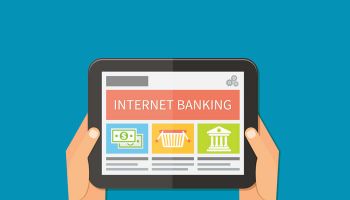Who will consumers choose?
Are banks or “disruptors” better placed to win consumer hearts and wallets?
- |
- Written by Paul Schaus
 This is the first in a four-part viewpoints series by CCG Catalyst's Paul Schaus regarding banks versus fintech players.
This is the first in a four-part viewpoints series by CCG Catalyst's Paul Schaus regarding banks versus fintech players.
Banks need to understand that they’re in an arms race. The disruptive threat posed by the proliferating number of fintech startups is right around the corner. There are now more than 12,000 fintech startups, and they’re fully engaged in finding new ways to make financial services more convenient and accessible for consumers.
Fintech comes in two flavors
These fintech companies can be divided into two segments.
Some of them want to replace banks by offering their own digital financial services. These are the players on the other side of the arms race.
Then there are those who want to be technology providers for banks, and they will be the key for banks in winning this digital arms race.
For all of the money that banks are pouring into innovation labs focused on digital products and services, they can’t experiment, learn, fail, and deploy fast enough to keep up with thousands of fintech startups in a market flush with venture funding.
Banks will need to work with these startups if they are to keep up with the pace of change.
Banks are also in an odd position in this arms race. Being the incumbents, you’d think they’d be favored to hold onto their valuable customer relationships in the face of new competition from smaller and less-established firms.
But those customer relationships are very vulnerable right now. Bank’s reputations have been buried under a pile of bad press and legal papers ever since the financial crisis. Their innovation efforts are equally buried under complex IT infrastructures made up of interlocking legacy systems.
And millennials who came of age during the crisis have little trust in banks. They are more willing than their parents to look to alternative providers for their financial needs.
Can banks overcome these challenges and fend off new competitors? In this four-part series we will discuss whether the incumbent banks or new entrants will succeed in four key business areas: consumer lending, payments, wealth management, and small business banking.
In this first part, we’ll examine one of the fastest-changing businesses in banking: consumer lending.
Lending: Banks cash in on disruption
Person-to-person—P2P—lending is growing fast, even though it still makes up a tiny fraction of the overall lending market.
Last year, the Federal Reserve estimated that P2P lending volume in the U.S. has grown 84% per quarter since 2007. During that time, consumer loans from banks shrank by 2% per quarter. As banks have tightened up lending standards, P2P lending has helped fill the void for consumers who can’t get credit from banks. Additionally, sites like Lending Club and Prosper typically offer much lower rates than banks.
This has led to speculation that these sites are becoming an alternative source of credit for consumers. But banks aren’t really losing ground to these new entrants. Banks are actually a major player in the growth of P2P lending.
Nearly two-thirds of loans issued through Lending Club and Prosper last year came from institutional investors including banks and asset managers, according to data from Orchard Platform, which helps banks find the best P2P loans to invest in.
P2P lending might not replace banks so much as give them an alternative channel to reach new lending customers.
And this new lending channel is much cheaper to operate: It doesn’t require thousands of branches staffed with loan officers. An article published last year on LendingMemo, a site devoted to P2P credit, reported that Lending Club’s operating expense ratio was almost a third of that of Wells Fargo’s lending operations.
Banks can use these P2P sites to reach new borrowers with little or bad credit history more cheaply, efficiently, and with less risk than ever before.
Banks can also launch their own online P2P lending platforms to compete with the new entrants, as Goldman Sachs is doing, if they can build out the technology infrastructure to support such a venture.
Big Data is still little
Additionally, big data and analytics promise better alternatives for determining the credit-worthiness of potential customers. We’re still in the early day of using non-traditional data and algorithms to determine a customer’s likelihood of repayment. Over the next few years, banks and technology providers will fine-tune the tools and processes for using these new methods to find credit-worthy customers.
Many banks have been working with data and analytics providers on this problem ever since the financial crisis and subsequent regulations caused banks to be more rigid about their loan prospects. This gives banks and their technology partners a good head start on new competitors who could also look to use technology to provide credit for consumers who can’t go to a bank.
Banks are already well entrenched in the trends that are changing consumer lending. Investing in P2P loans and continuing to work with data and analytics providers to find credit-worthy customers will help banks take advantage of disruptions in the consumer lending market and grow their consumer lending businesses.
While banks are also partnering up with many of the new players in the next area we will examine—payments—they are not in an equally strong position to hold onto their customer relationships there.
Next week: Why third-party mobile wallets are a raw deal for banks
Tagged under Lines of Business, Retail Banking, Channels, Viewpoints, Feature, Feature3,
Related items
- Inflation Continues to Grow Impacting All Parts of the Economy
- Banking Exchange Hosts Expert on Lending Regulatory Compliance
- Merger & Acquisition Round Up: MidFirst Bank, Provident
- FinCEN Underestimates Time Required to File Suspicious Activity Report
- Retirement Planning Creates Discord Among Couples














